Chinmay Sahu
Data-Driven Nonlinear TDOA for Accurate Source Localization in Complex Signal Dynamics
Aug 03, 2023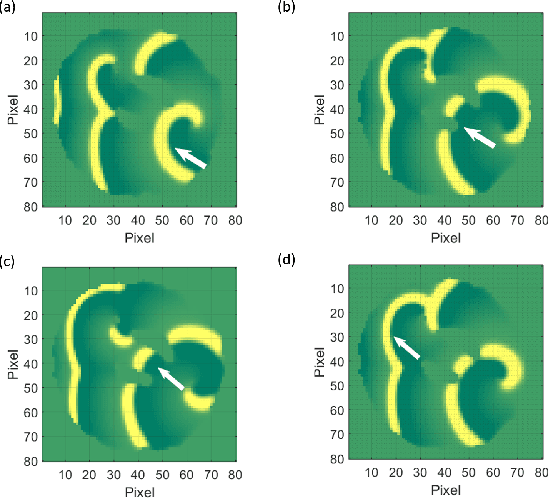
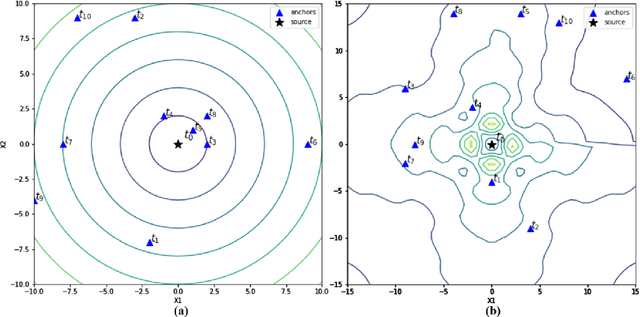
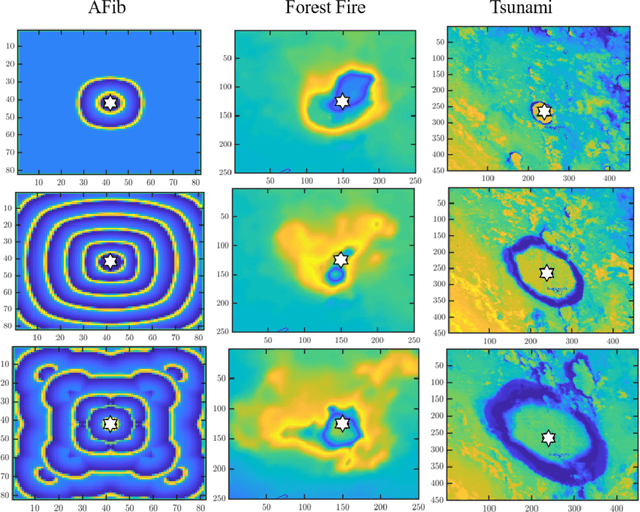
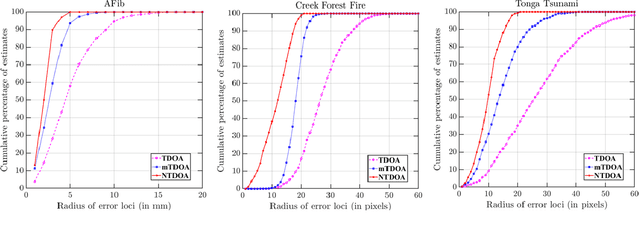
Abstract:The complex and dynamic propagation of oscillations and waves is often triggered by sources at unknown locations. Accurate source localization enables the elimination of the rotor core in atrial fibrillation (AFib) as an effective treatment for such severe cardiac disorder; it also finds potential use in locating the spreading source in natural disasters such as forest fires and tsunamis. However, existing approaches such as time of arrival (TOA) and time difference of arrival (TDOA) do not yield accurate localization results since they tacitly assume a constant signal propagation speed whereas realistic propagation is often non-static and heterogeneous. In this paper, we develop a nonlinear TDOA (NTDOA) approach which utilizes observational data from various positions to jointly learn the propagation speed at different angles and distances as well as the location of the source itself. Through examples of simulating the complex dynamics of electrical signals along the surface of the heart and satellite imagery from forest fires and tsunamis, we show that with a small handful of measurements, NTDOA, as a data-driven approach, can successfully locate the spreading source, leading also to better forecasting of the speed and direction of subsequent propagation.
Integrating machine learning concepts into undergraduate classes
Nov 09, 2022Abstract:In this innovative practice work-in-progress paper, we compare two different methods to teach machine learning concepts to undergraduate students in Electrical Engineering. While machine learning is now being offered as a senior-level elective in several curricula, this does not mean all students are exposed to it. Exposure to the concepts and practical applications of machine learning will assist in the creation of a workforce ready to tackle problems related to machine learning, currently a hot topic in industry. Preliminary assessments indicate that this approach promotes student learning. While students prefer the proposed side-by-side teaching approach, numerical comparisons show that the workshop approach may be more effective for student learning, indicating that further work in this area is required.
A novel non-linear transformation based multi-user identification algorithm for fixed text keystroke behavioral dynamics
Oct 05, 2022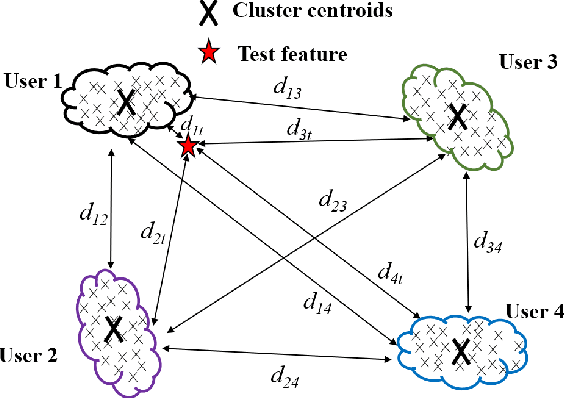

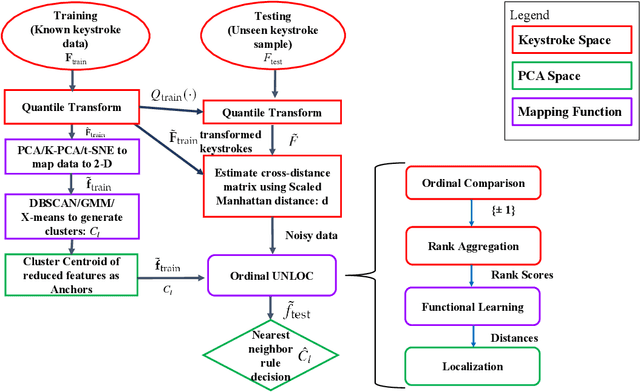

Abstract:In this paper, we propose a new technique to uniquely classify and identify multiple users accessing a single application using keystroke dynamics. This problem is usually encountered when multiple users have legitimate access to shared computers and accounts, where, at times, one user can inadvertently be logged in on another user's account. Since the login processes are usually bypassed at this stage, we rely on keystroke dynamics in order to tell users apart. Our algorithm uses the quantile transform and techniques from localization to classify and identify users. Specifically, we use an algorithm known as ordinal Unfolding based Localization (UNLOC), which uses only ordinal data obtained from comparing distance proxies, by "locating" users in a reduced PCA/Kernel-PCA/t-SNE space based on their typing patterns. Our results are validated with the help of benchmark keystroke datasets and show that our algorithm outperforms other methods.
SREDS: A dichromatic separation based measure of skin color
Apr 07, 2021

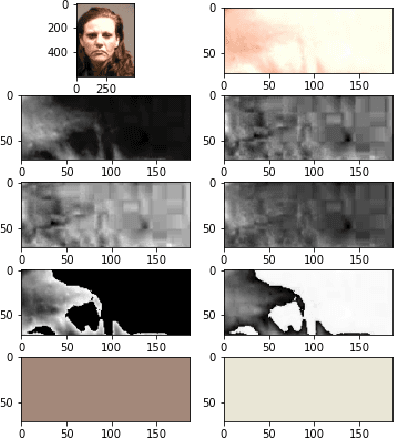
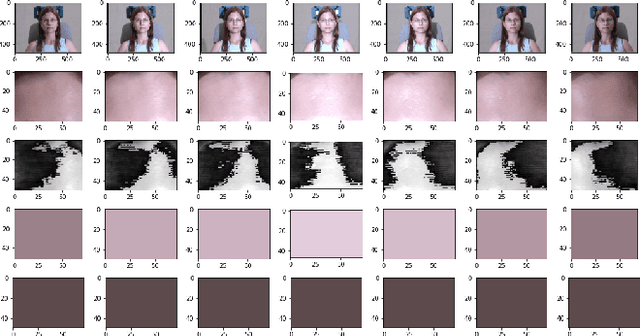
Abstract:Face recognition (FR) systems are fast becoming ubiquitous. However, differential performance among certain demographics was identified in several widely used FR models. The skin tone of the subject is an important factor in addressing the differential performance. Previous work has used modeling methods to propose skin tone measures of subjects across different illuminations or utilized subjective labels of skin color and demographic information. However, such models heavily rely on consistent background and lighting for calibration, or utilize labeled datasets, which are time-consuming to generate or are unavailable. In this work, we have developed a novel and data-driven skin color measure capable of accurately representing subjects' skin tone from a single image, without requiring a consistent background or illumination. Our measure leverages the dichromatic reflection model in RGB space to decompose skin patches into diffuse and specular bases.
 Add to Chrome
Add to Chrome Add to Firefox
Add to Firefox Add to Edge
Add to Edge